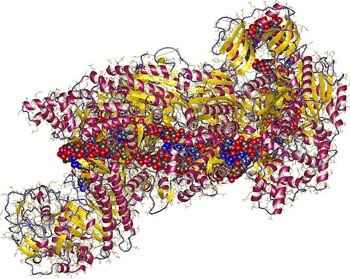Gene Editing Distinguishes Driver and Passenger Cancer Mutations
By LabMedica International staff writers
Posted on 12 Sep 2016
A team of German researchers has used the CRISPR/Cas9 gene editing technique to detect and repair mutations that promote tumor development and growth.Posted on 12 Sep 2016
CRISPRs (clustered regularly interspaced short palindromic repeats) are segments of prokaryotic DNA containing short repetitions of base sequences. Each repetition is followed by short segments of "spacer DNA" from previous exposures to a bacterial virus or plasmid. CRISPRs are found in approximately 40% of sequenced bacteria genomes and 90% of sequenced archaea. CRISPRs are often associated with cas genes that code for proteins related to CRISPRs. Since 2013, the CRISPR/Cas system has been used in research for gene editing (adding, disrupting, or changing the sequence of specific genes) and gene regulation. By delivering the Cas9 enzyme and appropriate guide RNAs (sgRNAs) into a cell, the organism's genome can be cut at any desired location. The conventional CRISPR/Cas9 system is composed of two parts: the Cas9 enzyme, which cleaves the DNA molecule and specific RNA guides that shepherd the Cas9 protein to the target gene on a DNA strand.

Image: A molecule model of a CRISPR (clustered regularly interspaced short palindromic repeats) and a DNA fragment from E. coli (Photo courtesy of Wikimedia Commons).
Investigators at the Technische Universität Dresden (Germany) and colleagues at other German research institutes reported in the August 30, 2016, online edition of the Journal of the National Cancer Institute that they had examined how many of the more than 500,000 reported cancer mutations could theoretically be targeted and found that more than 80% of the mutations could be cleaved with the currently most popular version of the CRISPR/Cas9 system. They then used CRISPR/Cas9 with cancer cell cultures to demonstrate that it was possible to specifically cleave a panel of common cancer mutations without significantly targeting healthy, wild type alleles.
"Mutations in cancer cells are identified at increasing speed through next generation sequencing, but we mostly do not know, which of these mutations are actually driving the disease and which ones are rather benign, " said senior author Dr. Frank Buchholz, professor and head of translational research at the Technische Universität Dresden. "This is an important advance, because we can now rapidly separate driver from passenger mutations. This is currently a bottleneck in cancer research. Because each cancer shows a specific combination of many mutations, this scientific approach could improve cancer diagnostics as mutations that promote cancer growth could be specifically identified. Based on the obtained results an individualized therapy could be initiated."
Related Links:
Technische Universität Dresden













